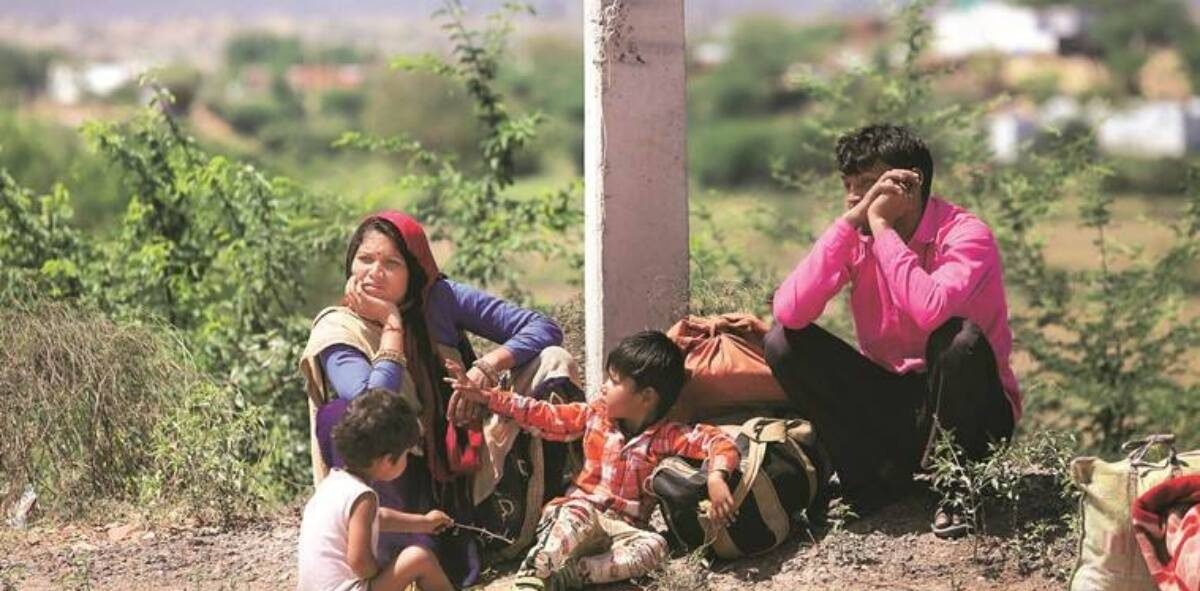The trek back home of around 8.5 million migratory labourers from Jharkhand was the state’s greatest difficulty during the Covid crisis. The photographs, statistics, and lessons learned from this voyage have now motivated the state administration to establish a crucial initiative for its migrant community.
Beginning this month, over 60 enumerators have fanned out across the state’s 24 districts, knocking on the doors of 11,000 homes in order to conduct the first Jharkhand Migrant Survey (JMS).
According to officials and researchers interviewed by The Indian Express, the objective is to map the primary employment sectors for migrant workers, determine the social security benefits accessible to their families, and identify the health risks they suffer.
The effort is a component of the state’s Safe and Responsible Migration Initiative (SRMI), which was launched at the end of 2021 and includes the establishment of a database of migrant workers.
“Through JMS, we hope to publish the first-ever state-level estimates of migration and circumstances, as well as migration-influencing factors. Arindam Banerjee, founding partner at Policy and Development Advisory Group (PDAG), stated that the evidence will be utilised to build a state-level policy framework on migration and the welfare of migrant workers in Jharkhand for the upcoming fiscal year 2023-24.
PDAG is a member of a consortium that signed a Memorandum of Understanding (MoU) with the state government in October 2021 to design, construct, and implement the SRMI, including the establishment of a technical support unit for “evidence-based informed policy making,” according to officials in the state’s Labour department.
One of the primary goals outlined in the MoU is to “integrate findings from the field survey to assist in the establishment of appropriate state policies to address welfare concerns of migrant workers in the state.”
Kunal Singh, the Research Lead at PDAG, stated that the enumerators will also conduct a “qualitative assessment” by interviewing community leaders and government officials “to verify last-mile service delivery and comprehend how safe migration is being facilitated.”
Regarding the nature of the questions, we have separated them into numerous categories, such as comprehending household characteristics, the outgoing and incoming migration, or both, and the push and pull reasons, as well as their quality of life. Then, we are attempting to ascertain the remittance savings or their utilisation, as well as the engagement of women within the home or their perspective on the nature of the labour desired,” Singh explained.
According to government estimates, approximately 27 percent of Jharkhand’s population consists of tribal people. This sector, according to officials, is “hit by low human development indices” and represents a substantial portion of the “vast exodus of the working age population.”
“The return of migrant workers to the state during the first Covid wave revealed deeper policy difficulties of social welfare, food security, means of subsistence, and health management. Jharkhand is also a major source state for migration to remote places such as Ladakh, Nagaland, Arunachal Pradesh, and the Andaman and Nicobar Islands, according to a Labour department official speaking to The Indian Express.
Jharkhand is not the only state that conducts surveys on migrant labour. Several of these surveys were first conducted in Kerala, followed by states such as Tamil Nadu and Punjab. “However, there is a fundamental distinction between labour mobility in Kerala and Jharkhand. The majority of Kerala’s workforce emigrates, primarily to Gulf states. The issue in Jharkhand is internal migration, according to another source.
The continuous dispute with the Border Roads Organisation over the welfare and safety of migrant workers from the state engaged on BRO projects, according to official sources, was another factor that prompted the government to formulate a policy. “The investigation has begun in this direction,” said an official.
Related Posts
| Jharkhand's government has launched a job portal to secure a 75% local quota in the private sector. |
